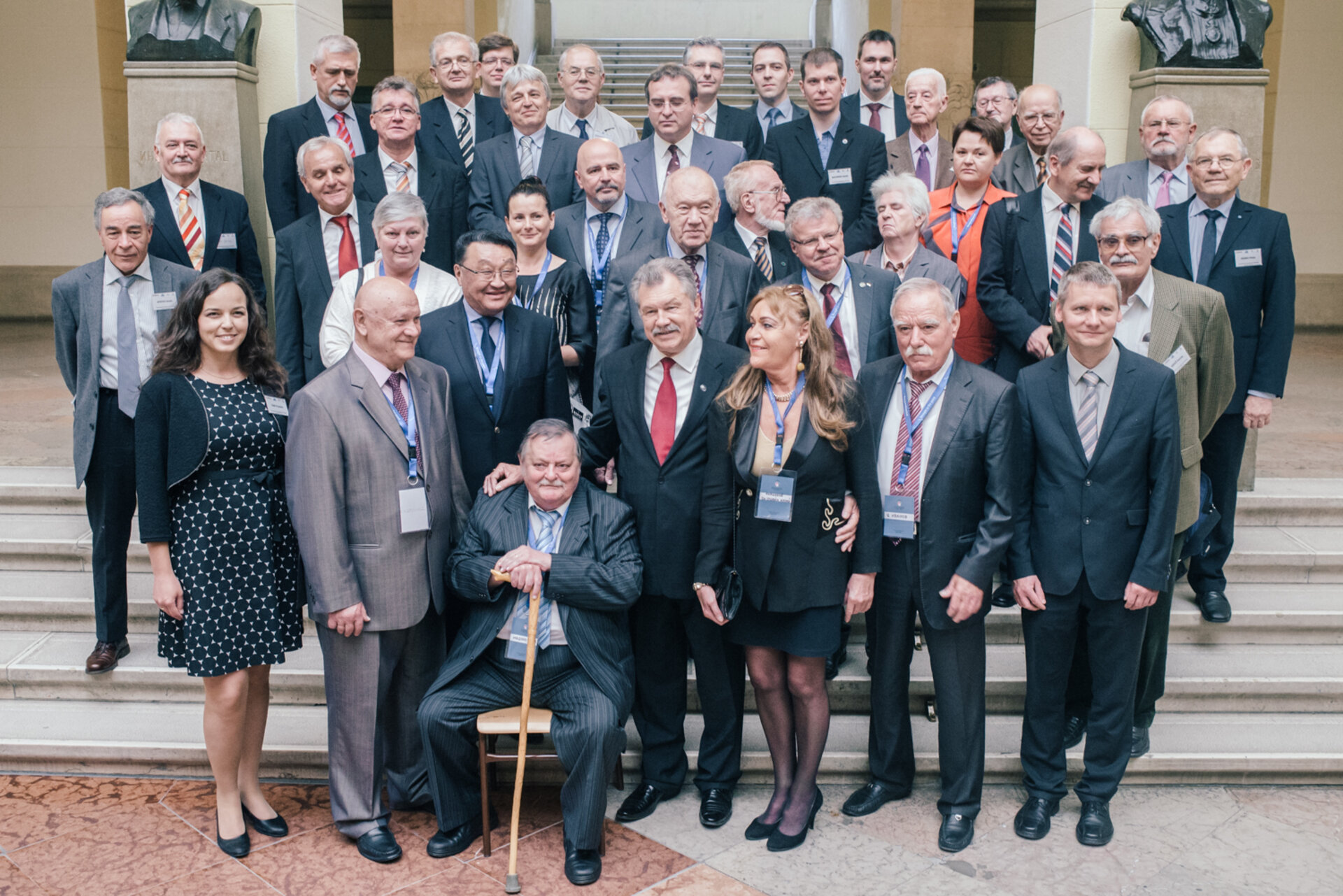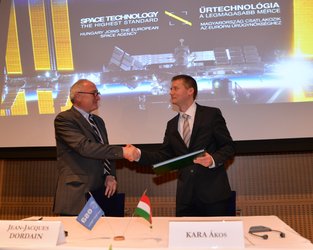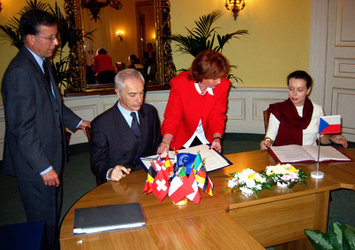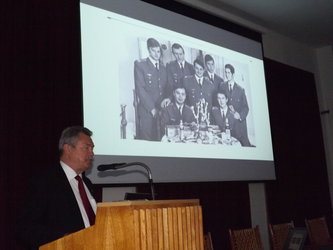The beginning of Hungarian manned spaceflight
Hungary entered the ranks of spacefaring countries on 26 May 1980. Bertalan Farkas, the first Hungarian cosmonaut and 97th human in outer space, was the subject of the recent ‘ŰR-LÉPTÉK’ conference in Budapest celebrating the 35th anniversary of his flight.
Numerous scientists, researchers and astronauts attended the 'ŰR-LÉPTÉK' conference at the Budapest University of Technology and Economics (BUTE). Speakers commended Bertalan’s achievements, and stressed the importance of international cooperation (for example, the Intercosmos programme, the International Space Station and ESA) in the peaceful use of outer space for the benefit of human mankind.
The conference was truly international: the attendees came from at least eight countries and spoke in Hungarian, English and Russian.
Bertalan’s fellow crewmember on the Soyuz 36 flight to the Salyut 6 space station was veteran cosmonaut Valeri Kubasov, who passed away just over a year ago. He and Bertalan returned to Earth aboard Soyuz 35, on 3 June 1980, after 8 days in space – which took Valeri’s total to 18 days over three missions. Their backups were Béla Magyari and Vladimir Dzhanibekov.

ESA’s congratulations to Bertalan were communicated by German ESA astronaut Reinhold Ewald. Bertalan was joined by seven colleagues and space pioneers on the first day of the event. These were Georgi Ivanov, Bulgaria; Alexei Yeliseyev, Russia (the mission control commander during Bertalan’s flight); Mirosław Hermaszewski, Poland; Jügderdemidiin Gürragchaa, Mongolia; Ivan Bella, Slovakia; and Vladimir Dzhanibekov. The cosmonauts shared their experiences with the audience at the end of the conference.
The opening speech was given by Kálmán Kovács, head of BUTE’s Innovation and Knowledge Centre, and Fruzsina Tari, Head of the Hungarian Space Office. Tari described the scientific results and practical uses of the experiments conducted by Bertalan 35 years ago.
One of the most important experiments was that of the ‘Pille’ radiation dosimeter, which has been in service for the past 35 years, and an updated version still serves the astronauts on the ISS today.

Scientists József Gyulai and András Roósz presented ‘EÖTVÖS’ and ‘BEALUCA’: the novel Hungarian-developed experiments using furnaces for semiconductor and alloy research. The ‘BIOSZFÉRA-M’ experiment was described by Éva Csató: focusing on the collection and comparison of pictures taken from space of terrestrial objects and phenomena.
Important data were provided by the mission’s medical-biological experiments. Péter Remes introduced the audience to various ways of measuring the changes in intellectual and psychological performance and states during extraordinary stress.
Finally, László Bacsárdi presented contemporary Hungarian achievements and innovations, the most famous being the power supply and magnetometer-plasma monitor of the Rosetta spacecraft and the Philae lander’s computer and power systems, both manufactured in Hungary.
Bertalan Farkas, although retired, is active in promoting education for the next generation of astronauts, giving public lectures worldwide.
This event, held in honour of the first Hungarian manned spaceflight was all the more relevant since Hungary signed its accession agreement with ESA on 24 February.









